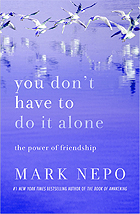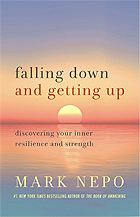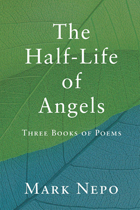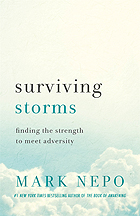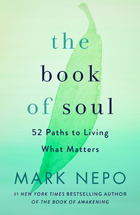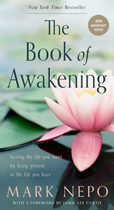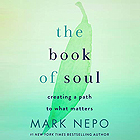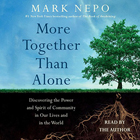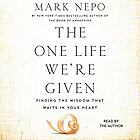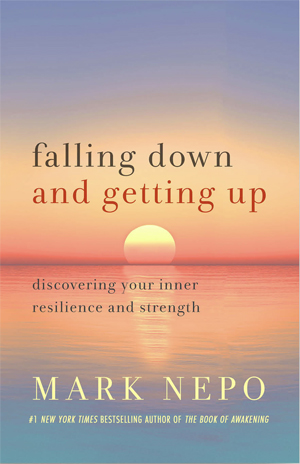| Books |  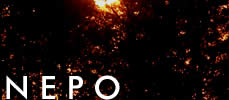  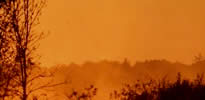 |
|
Falling Down and Getting Up ST MARTIN'S ESSENTIAL BOOKS, Sept 5, 2023 Order from an online bookseller:
Amazon
BOOK DESCRIPTION Mark Nepo is a master teacher who has been convening circles and guiding retreats for fifty years all over the world. Beloved as a poet, teacher, and storyteller, the New York Times bestselling author of The Book of Awakening has been called "one of the finest spiritual guides of our time," "a consummate storyteller," and "an eloquent spiritual teacher." His many books have been translated into more than twenty languages. Drawn from his many years of teaching, this book explores the perennial practices and choice-points we all face such as surviving and thriving, managing risk and enhancing risk, opening and closing, giving and receiving, living a balance between solitude and community, enlarging our sense of things when pain and fear make us small, and the never-ending practice of course-correcting and tuning as we go. Falling Down and Getting Up explores the archetypal rhythm that is inherent to every life in every stage of its growth. While no one likes to fall down, no one is exempt from this part of the human journey. From a longer and deeper perspective, falling down and getting up is the inevitable rhythm of transformation. In fact, each step we take forms a dance of falling down and getting up. This book focuses on the individual's transformative journey with all its ups and downs and twists and turns. In essence, how do we learn the dance of falling down and getting up? Mark's teaching is committed to introducing his students and readers to their own gifts and wisdom. If you haven't had the chance to sit in one his magical circles, this book is the next best thing. "The Hindu Upanishads offer the image of how a caterpillar bunches up before moving forward as a symbol of this kind of growth. Similarly, a nurse, who prompted me to get up and walk immediately after surgery, announced, "Two steps forward, one step back!" This is the rhythm of life we are asked to accept in order to live. Falling Down and Getting Up explores these timeless rhythms and the essential skills needed to fully live our lives."
EXCERPTS FROM THE CHAPTER RESILIENCE AND PRAYER Somehow, when I face what is mine to face and empty myself of all that is agitating me, I go clear like a lake after a storm. It is then that I can see through to the bottom of what is me, only to see that I share that bottom with all other beings. When I face my heartache and reach its bottom, there is the bottom of all heartache which is both comforting and renewing. When we can be completely authentic, resilience is the flow of strength that comes to us from everything that is not us. Because when being ourselves to the bottom of our personality, we trip into the well of all personality. When giving all our care to what is before us, we trip into the well of all love. When diving into the depth of our soul, we also swim in the depth of all being. Once opened that deeply, summoning and marshalling what is dormant in us to face the situation at hand empowers our fortitude. The deeper reward for inhabiting our full humanity is that the Universal Life-Force floods us with enlivened capacity. Just as you must plug in a lamp to access electricity, our presence and full humanity are required as a way to "plug in" to the Universal Life-Force that flows through all things. When holding nothing back and being true, we are lifted by the healing forces of life and illuminated. In just this way, resilience fills us with strength from everything that is not us, when we can be thoroughly who we are. Like it or not, we are challenged to cooperate with the forces of life as they shape us. One way we do this is to speak from our heart. Because speaking from our heart makes us strong enough to endure the erosion of suffering. Speaking from our heart keeps us strong by clearing the inlet we call soul of unprocessed experience. This thoroughness of being and congruence of relationship between us and other life opens us to a deeper, more enduring form of resilience, through which the core of our being opens to the core of all being, making us for the moment stronger than we are. FROM THE CHAPTER NO ONE IS WATCHING It took almost dying for me to realize that no one is watching. This doesn't mean we are alone but that no one is out of view judging us. From an early age, we are taught by parents, family, society, and various traditions that our actions are being judged. If we fail or come up wanting, we are censured by others to some form of living hell. Once we've internalized the watcher, we carry this living hell inside our minds. The Argentinian writer Jorge Luis Borges has a poem called "The Watcher" in which he laments his hell for never being free of this inner critic. Once a pattern of criticism is knit in our mind, the watcher voice can appear as shame, guilt, regret, or perfectionism. Yet while we are always accountable for our actions in the world, we are not under the watch of some moral tribunal everywhere we go. For true responsibility comes solely from the hard work of actual relationship, the authentic push and pull between honest, caring souls. The struggle to free ourselves of the watcher is part of our initiation into the realm of a true self. At first, we are trained to seek the approval of these voices in order to comply with the expectations of others. However, when governed by the watcher, our entire perceptual field is misguided. For appeasing these voices is not where lasting peace comes from. In time, only great love and great suffering can silence and even break the grip of the watcher until we are left with a bareness of being that is irreducible. FROM THE CHAPTER TRYING TO WALK GENTLY In my forties, after growing up with an angry mother, and after two marriages in which I kept missing what was true, Susan came along and held my face, fully and gently, as if I were a surprising flower. Till that moment, I hadn't realized that no one had ever held my face. My life was cracked open that day by her tenderness. So, we can be broken open by love. It isn't just the accidents and avalanches that change us. The whisper of beauty holds a power unmatched in its capacity to open even the oldest shell. And the whisper of truth is just as transforming. I was eight when my grandmother brought me to her on the steps of her basement in Brooklyn. She held me firmly, as if the world were teetering and her deep immigrant eyes said that she'd never let me go. It is a steadiness I have carried in my heart for seventy years. What I'm trying to say, in yet another way, is that we each have to find that corridor of aliveness that can carry us through the turbulence of life on Earth. And it's the unexpected kindness and strength of those along the way who, with the slightest nudge, can save our lives. Of course, we seldom know if we've made such a difference. Though, in time, we are humbled to realize when someone has saved us in this way. Perhaps the most insidious modern illness is the underside of self-reliance that has us believe that we can make it alone. The truth is that in resisting help, we often break things more quickly than we can put them together. I remember falling hard on our yellow lab's foot when she was five. My heel splintered her toe. I felt awful as she limped over to lick my face. She had to have surgery, which gave her arthritis. I never forgave myself. How she hurt made me walk lightly. I think this was her gift to me. I still try to walk gently - even on leaves - so I might break as little as possible on my way. It made me understand that everything is a teacher, if we let it in. The wind teaches the hole in the fence what it was made for. And experience teaches the hole in our heart what we are made for. When I was a boy, a friend of my father caught an eel, killed it, and went to fry it in a pan. I was horrified to see it still twitch after it had died. But since, I've come to see that what lives in us refuses to die, no matter what is done to us. When allowed to surface, that pulse permeates everything as kindness and tenderness. It's how a fist becomes an open palm. How the dissipation of anger comes full circle to become a soft embrace. And how every flower is coaxed to blossom by the presence of light and warmth. Under all the wreckage and ruin, the very pulse of life waits to spark and spread. At times, we're blessed to ride it like a comet of Spirit, which everyone feels, but which no one can see.
Reviews Amid this luminous new collection of wisdom, Mark Nepo offers one of the most robust and tender teachings on grief I have come across. In Mark's hands, pain becomes poetry, and enlarges our hearts enough to carry what we may have thought we couldn't. Mark Nepo's words have been a friend by my side for as long as I can remember. Mark uses language to weave us into the web of life, so we feel held, seen, and a part of something beautiful. He has done it yet again with Falling Down and Getting Up. Mark has travelled into the depths of what it means to be human and brought back this book for all of us. When you fall, and you will because we all do, this book will be an outstretched hand helping you to stand again, and take the next step. Mark Nepo has led workshops at Omega Institute for many years. His classes are like a gathering of travelers at an oasis, a nourishing stop on a long journey. Now, in this treasure of a book, we all get the chance to experience the magic Mark creates - the learning, the beauty, the healing. As Mark says, "We need each other to heal one more time than we are broken." This new book is sublime. Mark Nepo returns. Hallelujah! Our ever-enfolding, always-growing, supremely astute sage of our times sings to us once again and I couldn't be happier! Through the comforting beauty of Falling Down and Getting Up, I felt understood, awakened, and expanded, not from fantasy but from experiencing, through his words, the deeper majesty in my everyday life. The majesty that is in all of our lives. This will be yet another of his masterpieces I will return to, again and again, to luxuriate in his exquisite expression. You'll want to clutch this one close to your heart, to make it a part of you. What a gift! Once more, Nepo hits the perfect note that is needed in these most challenging times. It's easy to open one's heart to his writings, for all this has a ring of deep truth. Nepo gives wind to our sails as we navigate the waters of falling down and getting up. I recommend this book with unreserved enthusiasm. In Falling Down and Getting Up, Mark Nepo shares a lifetime of hard-earned wisdom through his moving, heart-warming vignettes that are like songs for the soul taking us home to ourselves. Like a jazz virtuoso, Mark weaves his poetry and teachings to move gently, yet persistently, into your blood and bones as he helps us move from the fear of pain and suffering to the rebirth of ever getting back up as we learn and grow together. I hope you will find a way to read this book slowly, deeply, and let it nourish you with its gentle, wise and heart-felt guidance. Drawn from Mark Nepo's many years of teaching, this book offers a transformative journey that helps us to connect with and explore the eternal part of ourselves - our spiritual nature, our essence. Falling down is part of the human journey, but Mark shows us how it can become a path of spiritual transformation. In this book, Mark unfolds the courage that can befriend us in learning the dance of falling down and getting up with grace.
A CONVERSATION WITH MARK ABOUT HIS NEW BOOK OF POETRY, THE HALF-LIFE OF ANGELS: THREE BOOKS OF POEMS QUESTION: What led you to write this book? QUESTION: What does this book explore? QUESTION: What do you mean by the title, Falling Down and Getting Up? QUESTION: The center section of the book explores what you call "The Deeper Teachers" of fear, pain, and grief. Can you explain this a bit more? QUESTION: You've written so many books through the years. Can you point to some of the life lessons you've discovered that mean the most to you? QUESTION: In an early chapter, you talk about the difference between healing and justice. What are you suggesting here? QUESTION: What is your hope for anyone engaging with this book? |



|
